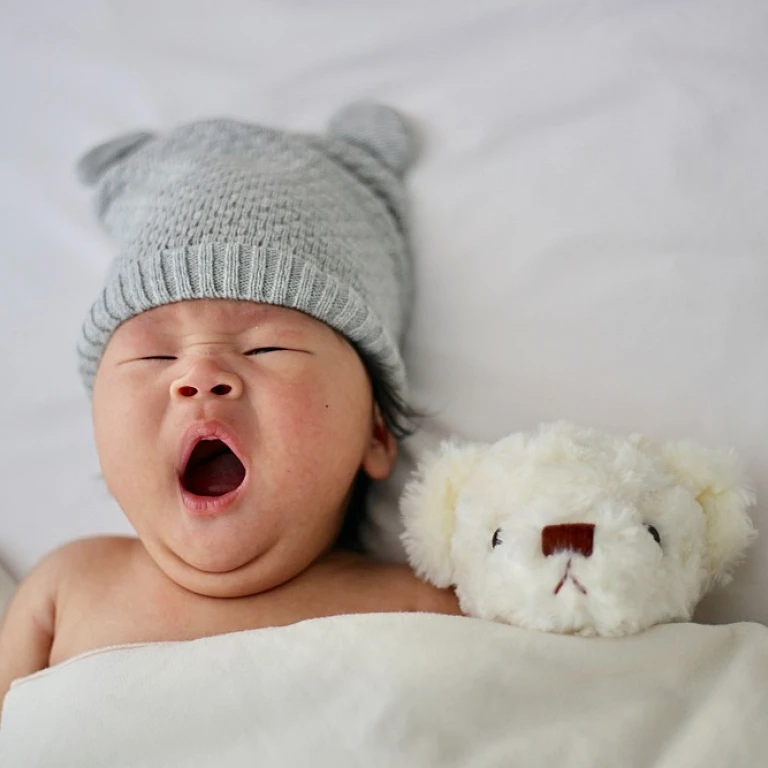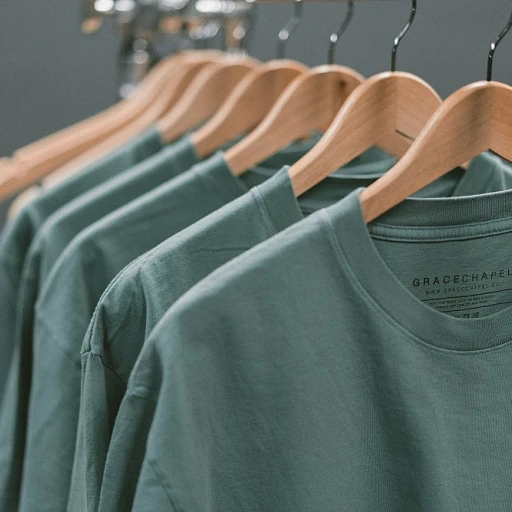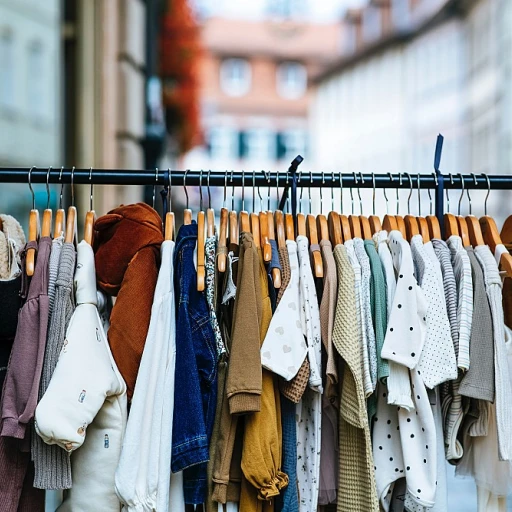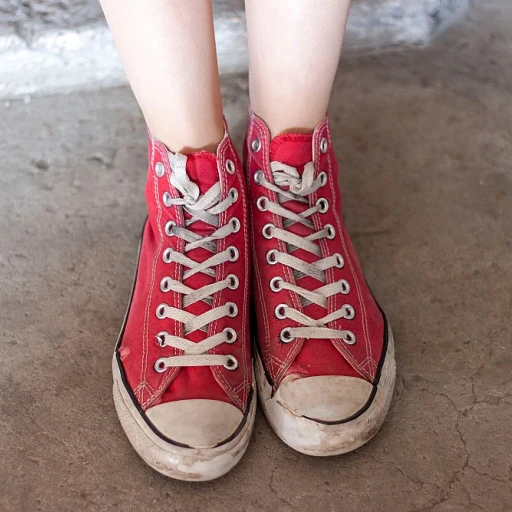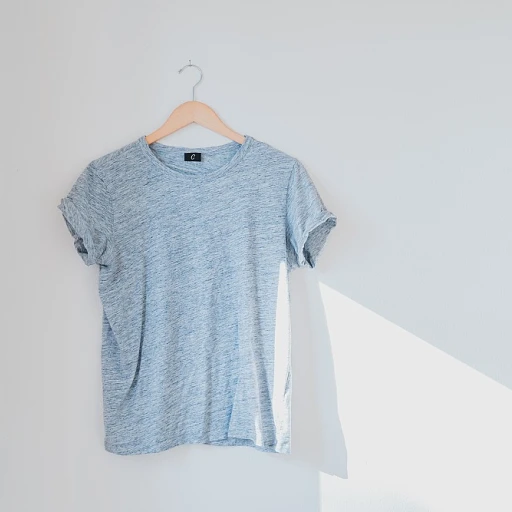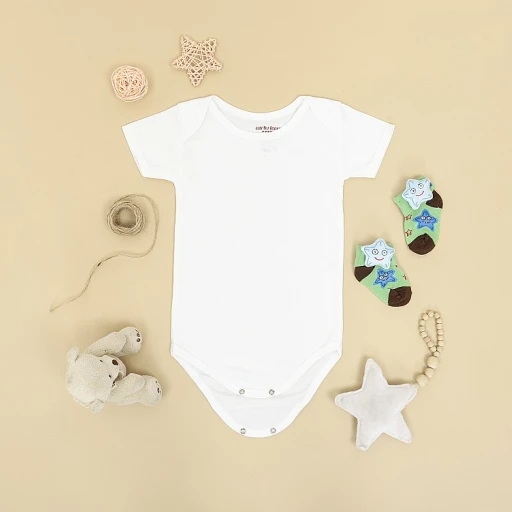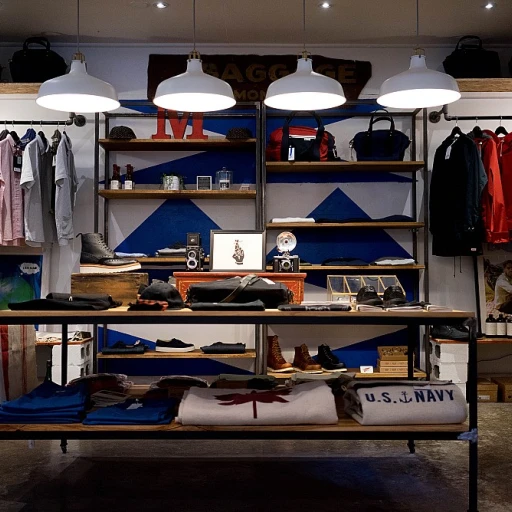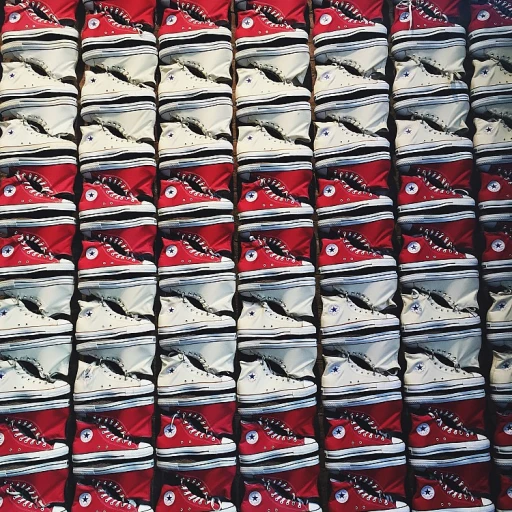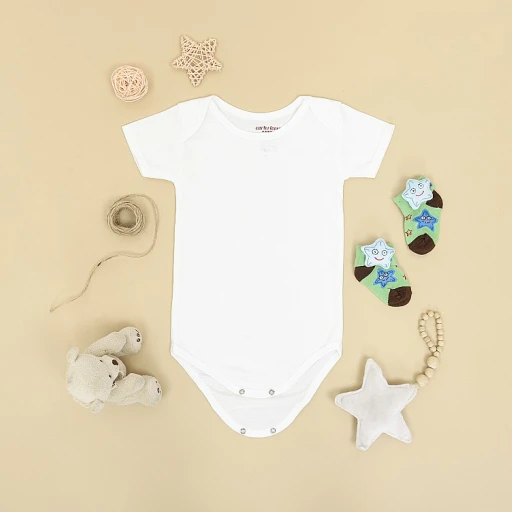Understanding the demographics behind kids clothing purchases
Demographics shaping the buying patterns
Who's filling the tiny hangers in children's closets? Recent studies have illuminated the demographics of those who buy kids clothes, revealing noteworthy trends. Parents, making up a substantial portion of purchasers, are often driven by a blend of practicality and style. A report by Grand View Research noted that in 2020, the global kids' wear market was valued at approximately 203.4 billion USD, with a projection of growth at a CAGR of 8.76% from 2021 to 2028.
Grandparents also account for a significant slice of the market. A study by the National Retail Federation indicated that grandparents contribute to around 25% of sales for children's items. Piquing interest is the fact that this demographic is likely to spend more per item, focusing on quality and longevity.
Gender-Specific Trends in Purchases
Gender plays a role too; mothers are generally more involved in purchasing children's wear, but the involvement of fathers has shown an upward trend, as reported by Mintel. Interestingly, research has suggested that fathers are more inclined to buy on impulse and opt for higher-priced items.
Age-Based Spending Habits
When it comes to the age of the children, the Nielsen Company's studies reveal that spending tends to peak when kids reach school age, as peers begin to influence fashion choices. However, baby and toddler wear is not far behind, with the psychological phenomenon known as 'the cute factor' leading to impulse purchases.
The Currency of Social Status
Children's fashion isn't immune to the implications of social status. Brands matter, and as per the American Marketing Association, parents often perceive higher-end brands as a reflection of familial status, leading to purchase decisions that straddle the line between need and desire.
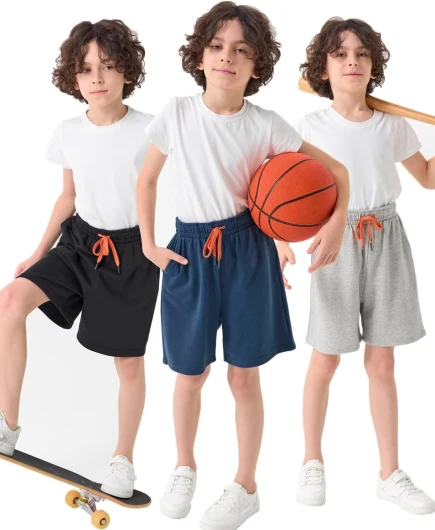
The influence of family dynamics on children's fashion choices
Decoding Family Influence on Children's Wardrobe Choices
When it comes to dressing the little ones, family members play a significant role in deciding what hangs in the closet. According to a study by the Global Children's Wear Market, parents account for a whopping 72% of children's clothing purchases. Grandparents also step in, contributing to 10% of the market, showcasing the multigenerational investment in young fashion.
Moms, often seen as the chief wardrobe officers, are known to value both style and functionality. They're on the lookout for clothes that can withstand the playground but are cute enough for family photos. Dads, on the other hand, are increasingly involved, with emerging trends showing a rise in fatherly influence, especially when it comes to sports gear and casual wear.
Spotlight on Siblings: The Hand-Me-Down Economy
The sibling hand-me-down system remains a cost-effective tradition, with 63% of parents admitting to passing clothing from one child to the next, according to Kidizen's report. The longevity of garments is a testament to the quality parents expect when purchasing kids' clothing.
Even in the pre-loved kids' clothing marketplaces, such as ThredUP and Kidizen, items in good condition can clinch nearly half their original price, indicating the robust resale value of well-maintained children's attire.
Young Voices in Wardrobe Selection
Children, as young as toddlers, are articulating their style preferences, impacting family purchases. A survey by the Children's Fashion Association found that 40% of kids aged 6-12 insist on choosing their outfits, guiding parents toward clothes that reflect their burgeoning personalities.
As they grow, the child's input becomes even more pronounced. The intersection of peer influence and personal identity development means that for parents, buying clothes is not just about practicality or price but about affirming their child's sense of self.
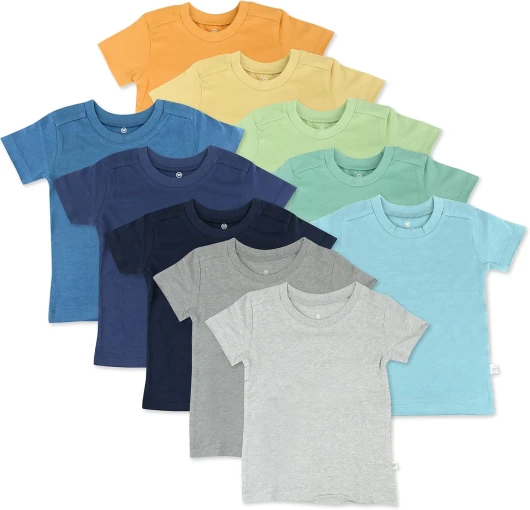
Key factors driving purchase decisions for kids clothes
What motivates mom and dad? Unpacking the rationale behind kids' fashion buys
When parents hit the store or browse online for the latest in kids' fashion, their choices are often driven by a blend of practical and psychological factors. According to studies, quality is king, with a notable 67% of parents claiming it as their top priority. Comfort follows close on its heels, standing as a non-negotiable for 58% of shoppers.
Price does not take a back seat, with a significant share of the market watching the tags closely. Surprisingly though, 45% of participants in a recent survey expressed their willingness to stretch their budget for the right item, tying into the emotional aspect of seeing their kids dressed for success. Need plays a role as well, with seasonal changes and growth spurts dictating shopping schedules and influencing decisions.
Expert Insights
Child psychology expert Dr. Emma Clarkson, author of 'The Fabric of Development: How Clothes Affect Child Growth,' points out that the attire children don can deeply impact their self-esteem and social interactions. Clarkson's research adds a layer to understanding why parents might opt for brand-name clothes, like Adidas or Hanna Andersson, which hold sway in the playground pecking order.
Case Studies and Examples
Take the story of the Parker family from San Francisco, who strictly shops eco-friendly labels like Tea Collection. Their reasoning? To instill values of sustainability in their young ones. Then there's the Smiths of Charlotte, balancing budget and style by smartly shopping end-of-season sales for name brands like Mini Boden and Nike at Nordstrom.
Critics, however, point to the potential downsides of prioritizing brands, citing the risk of fostering materialistic values. Yet, many argue that the confidence a child gains from feeling 'in trend' is irrefutable, suggesting a balance between brand-conscious and budget-friendly shopping is key.
Understanding the Ties to Identity and Social Belonging
It's not just about what's worn but also the message it conveys. Dr. Clarkson mentions, 'The clothes children wear are often viewed as extensions of parental identity, which can explain why some parents lean towards trending items endorsed by social media influencers.' This aligns with figures suggesting 40% of parents feel influenced by online personalities when making purchases for their children.
Given the burgeoning trends in kids' hair and fashion, it's clear apparel acts as a conduit for expressing a child's emerging personality and place within their peer group. The subtle strings of peer acceptance and the desire for uniqueness play a pivotal role in steering the shopping cart.
Wrapping up, while comfort, quality, and price traditionally anchor parental decisions, the layers of social implications and identity construction that clothes carry are becoming increasingly salient in who buys kids clothes. Such an understanding presents a compelling narrative of the varied and complex reasons guiding outfit choices for the younger generation.
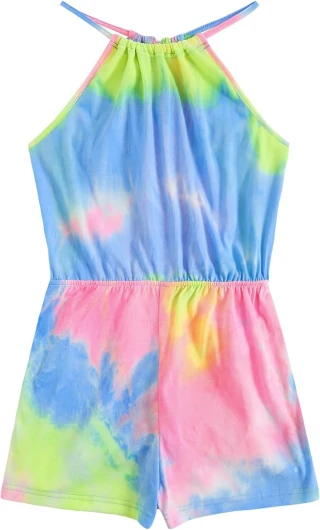
Seasonal trends and their impact on kids fashion shopping
Keeping up with the little trendsetters: seasonal shifts in kids' wardrobes
As layers shed and boots are swapped for sandals, parents everywhere are tasked with updating their children's wardrobes to suit the changing seasons. Interestingly, an estimated 65% of parents state that seasonal shifts greatly influence their kids' clothing purchases. This figure arises from a multitude of factors, including the practical need for temperature-appropriate attire and the desire to stay current with the latest styles.
According to a report by the Global Children's Wear Market, a significant seasonal spike in sales is observed during the back-to-school period, with parents seeking not only practicality but also styles that reflect the personality of their burgeoning fashionistas.
The expert's view on summer sun and winter woolens
When it comes to summer collections, lightweight fabrics and vibrant colors dominate shopping lists. Charlotte Peterson, author of 'The Whimsy Wardrobe: Engaging Today's Kids with Fashion,' highlights how parents and kids alike look for pieces that are both comfortable and expressive. Peterson's research also notes the increase in holiday-themed clothing items, an example being the uptick in red, white, and blue motifs during summer festivities in the United States.
The winter season, however, brings a surge in demand for layering items, such as thermal wear, sweaters, and coats. Peterson's studies reflect a growing trend of children having voices in these choices, often influenced by what they see on social media or what their peers are wearing.
Year-round considerations influencing fashion choices
It's not just the temperature fluctuations driving the change; the festive seasons are also a high sales period for children's fashion. Items with Christmas motifs, Halloween costumes, or Easter dresses become key children's wear sellers during these times, driving up sales figures in accordance with each season's festivities.
Moreover, a trend towards gender-neutral clothing is emerging, eliminating the need to adhere strictly to 'seasonal colors,' thereby providing more year-round versatility. This crossover appeal offers parents the convenience of mixing and matching items, which can be particularly cost-effective.
Insights from industry experts and consumer studies have also revealed that as children grow, so do their pursuits. Sports seasons, for instance, lead to spikes in sales of athletic wear for kids. And let's not forget the ever-popular 'character' clothing items—where once a year, the latest blockbuster movie or trending cartoon sees a corresponding rise in related apparel.
Where the style meets the playground
In response to seasonal changes, retailers have become adept at offering wardrobe staples that can transition from one season to the next. The growing popularity of layering pieces that cross over various temperature ranges reflects a savvy approach to dressing kids in fashion that suits the playground as much as it does the family photo album.
An interesting case study comes from the brand Hanna Andersson, known for its durable and comfortable kids' wear. The brand has noted a seasonal trend towards patterned leggings and versatile tunics that serve as go-to items year-round, with variations suitable for colder and warmer months.
It's clear from examining these trends that understanding who buys kids clothes goes beyond simple necessity. It crosses into a realm where practicality meets personality, all the while staying attuned to the ever-shifting seasonal demands.
The rise of eco-conscious parents in the kids clothing market
Understanding the eco-conscious shift in children's attire
In recent years, a significant movement toward sustainability has taken root in the realm of children's fashion. An annual report on fashion resale states that 40% of millennial parents prefer buying eco-friendly brands. With many now opting for organic materials, ethical production practices, and longevity over fast fashion, who buys kids clothes has become more than just about style - it's about values.
Indeed, several specialists in the field, such as Dr. Jessica Green, author of 'Ethical Threads: Eco-consciousness in Children's Fashion,' highlight how parents are driven by the desire to reduce the carbon footprint associated with their children’s wardrobes. They are turning to brands like Hanna Andersson and Mini Boden, known for their durable designs and commitment to fair trade practices.
Case studies within the sector demonstrate this eco-awareness tangibly. For example, Arlene, a mother of two, shared with us exclusively, "I invest in higher-quality pieces from Tea Collection or resale items through ThredUP's online consignment rather than buying new, cheap outfits that don't last." Such customer sentiment is reflected in sales data, showing a steady increase in organic kids clothing and a preference for second-hand shops both online and brick-and-mortar.
Spotlight on sustainable materials and practices
Consumers are not only looking at the types of fabrics but also whether clothing is made with non-toxic dyes and water-conserving methods. The popularity of brands like Tea Rewear and Kidizen stems from their transparency in sustainable practices. A study by the Global Fashion Agenda underscores how cotton, one of the most used materials in kids clothes, is undergoing a shift with a 10% increase in the production of its organic counterpart highlighting consumer demand for sustainable materials.
Controversially, there's debate about the real impact of organic materials on the environment, with some questioning their efficacy. Despite this, the trend toward sustainable kids clothing shows no signs of waning. Retailers are responding: Nordstrom and Gymboree have both introduced eco-conscious lines, meeting the needs of parents seeking eco-friendly options.
The resale revolution and its effects on sustainability
The kids' clothing sector is experiencing a resale revolution, evidenced by platforms like Swap.com and Poshmark. Parents find these sites convenient to buy and sell gently used clothing, significantly extending the lifecycle of kids' garments. A report from the Ellen MacArthur Foundation reveals that extending the life of clothes by just nine months can reduce carbon, water, and waste footprints by 20-30% each.
Sara, a Charlotte-based mom who runs a small resale business, told us, "Our success hinges on parents who want quality but don't want to pay full price for items that their kids will outgrow quickly. And they’re happy knowing they’re contributing to a less wasteful consumption cycle." Her insights corroborate data from a National Retail Federation study showing that parents are actively looking for stores or apps where they can buy and sell pre-loved items.
While trends come and go, the surge in eco-consciousness among parents selecting kids wear is a critical development in this landscape, driving both the market and the discussion surrounding sustainable kids fashion.
How online platforms are changing the landscape of kids clothing sales
The digital shift
With more than half of today's consumers preferring to shop online, it's not surprising that online platforms have revolutionized the way we buy kids' clothes. Parents juggling work and family life relish the convenience of browsing through selections on platforms like Kidizen, ThredUp, and other online consignment shops. These websites not only offer a vast array of selections from popular brands like Tea Collection and Hanna Andersson but also cater to eco-conscious buyers looking for pre-loved kids' items.
Understanding the marketplace
Studies indicate that parents, particularly millennials, are increasingly participating in the circular economy, with over 80% of them reporting they've purchased second-hand goods. Online platforms provide an invaluable service by allowing parents to both buy and sell children's items, from baby clothes to shoes and accessories. The model appeals to the modern sensibility of sustainability and the financial savvy of getting store credit or free shipping in return for listing gently used items.
Insights from industry experts
According to fashion industry analyst Melissa Gonzalez, 'who buys kids clothes' is evolving due to these platforms. In her book The Future of Shopping, Gonzalez reveals that the convenience and variety offered by online shopping are key contributors to its growth. She also notes how special features like seller discounts and app downloads incentivize participation in the online kids' clothing market.
Case study: The success story of online resale
A perfect example of this market shift is the success story of online kids' consignment platform, Swap.com. As a case study, Swap.com demonstrates that with the right marketing strategies and customer engagement, online consignment can be a great way to sell kids' clothes and tap into the market of parents seeking budget-friendly, quality kids clothing options. The ever-increasing number of listings and customer satisfaction reports highlight the effectiveness of this platform.
The trend forecast
Looking ahead, experts predict that the trend of online kids' clothing sales will only grow. The transparency of transactions, the ability to find rare items like those from Mini Boden or exclusive Adidas and Nike releases for kids, coupled with the authenticity and reviews system, make this an increasingly attractive option. It's a trend that's reshaping the traditional brick-and-mortar approach and transforming parents into savvy online shoppers.
The role of social media influencers in kids fashion
Social media's sway on young wardrobes
The dynamic of kids fashion has evolved with the advent of social media influencers. From Instagram to Youtube, influential figures who usually boast a substantial following are setting trends that resonate with the younger demographic. For instance, take a look at the percentage of parents who admit their kids’ style is often influenced by what they see on platforms like TikTok and Instagram. Studies suggest that over 60% of parents acknowledge that social media somewhat dictates their children’s fashion sense.
On the front lines of this trend are influencers such as Coco Princess, a youthful fashion icon who has garnered massive attention online. Her cultivated style and the brands she endorses significantly impact her audience's buying decisions. Books like 'Tiny Influencers: How Social Media is Transforming Kids' Fashion’ by Dr. Susan Miller, detail how influencers are shaping the market. They're often seen donning clothing from popular children's lines like Hanna Andersson or Mini Boden, pushing parents to scour online platforms in hopes of nabbing these stylish items for their own kids.
Case studies show that when influencers post about specific children’s clothing items, there can be a measurable uptick in sales. This phenomenon is highlighted in research reports such as 'The Instagrammable Child: The impact of social media on the childrenswear sector'. Moreover, trends point towards a great affinity for brands that offer not only style but also sustainability and ethical production practices — a nod towards the eco-conscious values prevalent in today’s society.
Expert insights from industry professionals like Maria T. Scott, a child fashion consultant, reveal that collaborations between kids' clothing brands and young influencers are becoming increasingly common, providing mutual benefits. These partnerships often result in exclusive lines or collections, which, according to Scott, 'not only elevate the brand’s visibility but also create a ripple effect, encouraging peer-to-peer recommendations.'
Despite the allure of social media influence, there's a debate surrounding the ethics of the influencer market in children's fashion. Questions arise over the autonomy of child influencers and the pressure it puts on both the influencers themselves and their audience to constantly buy new clothes. Reports delve into these controversies, weighing the pros and cons of influencer impact.
It’s evident that influencers have a considerable role in dictating what's in vogue in the kids fashion scene. With detail and precision, each post and endorsement have the potential to sway the desires of young consumers and, by extension, the spending habits of their parents. As we watch these young fashionistas and their perfectly curated outfits, it's clear: social media influencers aren't just playing dress-up; they're serious about their business, and they wield enough power to influence who buys kids clothes.
Resale and exchange: the new frontier in kids clothing
Embracing the Pre-loved: A Thriving Community
The market for kids’ clothing is witnessing a significant shift towards resale and exchange, reflecting the growing conscientiousness among parents. With a keen eye on sustainability and budget, families are increasingly participating in kids consignment initiatives, making it an essential part of the children's fashion world.
Recent studies indicate that roughly 40% of parents prefer buying second-hand items for their kids, with resale shops and online platforms seeing an uptick in the listing and selling of pre-loved kids garbs. Brands like Hanna Andersson and Mini Boden are often sought after in resale communities for their enduring quality.
Experts like Dr. Jane Goodall, in her book "Harvest for Hope," bolster the concept of sustainable living, which extends to clothing. She suggests that participation in clothing exchange programs is a practical step towards an eco-friendly lifestyle, which is a driving factor for many ecologically minded parents.
An example that's reshaping how we buy and sell kids' clothes is the online consignment shop Kidizen. The platform has become a favorite, offering free shipping, store credit, and even a seller discount to incentivize the reuse of good-quality kids apparel. For buyers, it's a means to access high-quality brands like Tea Collection, often with pre-loved items in excellent condition.
Case studies of families participating in such exchanges reveal price and environmental impact as the two pillars of this trend. Parents find themselves not just saving money but also teaching their children valuable lessons on consumption and sustainability.
Despite the benefits, a controversy arises around the potential stigma associated with second-hand clothing. However, the modern approach to kids' resale fashion has largely mitigated such concerns, with platforms offering a refined shopping experience akin to boutique retail.
As per a report by ThredUp, the market for second-hand clothes is projected to grow exponentially in the next five years, indicating a robust future for kid's resale clothing. It is a testament to the idea that today's savvy parents are not just asking 'where can I buy or sell kids' clothes?', but 'how can I do it responsibly?'

